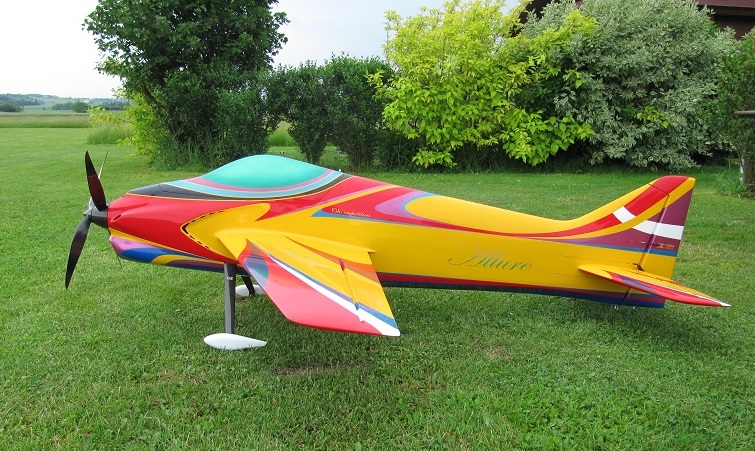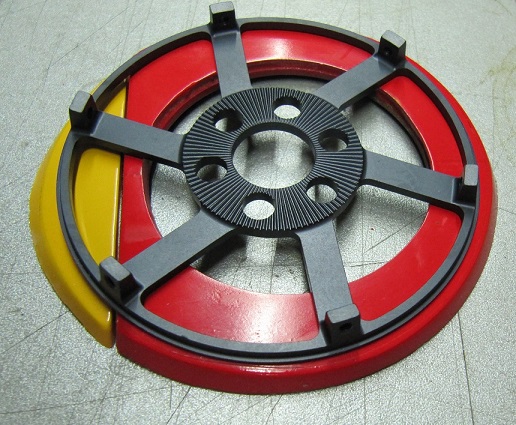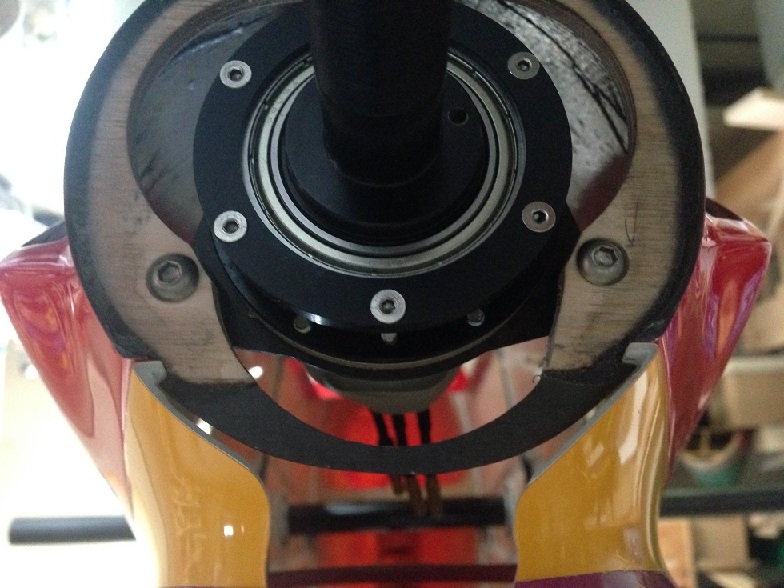
Building a Contra-Allure from Bryan Herbert

Ordered in the middle of 2015 my new bird finally arrived in January 2016. For reasons of visibility I ordered a color swap version.
It is obvious that for my eyes a combination of yellow and red is the best overall compromise for different lighting conditions.
I decided to go with an electric version with the YS chin cowl for optical reasons.
Weight of the kit:
| Part | weight in gram |
| Fuselage | 902 |
| Chin Cowl | 107,3 |
| Canopy | 114,4 |
| Wing Tube | 58,6 |
| Left Wing | 388,1 |
| Right Wing | 384,0 |
| Left Stab | 118,5 |
| Right Stab w. Tube | 129,5 |
| Rudder Servo Tray | 10,3 |
| Undercarriage | 100,5 |
| Wheel Pants | 23,1 |
| Battery Tray/Carbon Tubes | 34,5 |
| Accessories | 70 |
| Total | 2440,8 |
So the kit was not a very light but, compared to others, also not a heavy one.
Taking into consideration that the yellow color scheme adds up some weight the kit was rather light (I have been told)
Well, I was satisfied with the weight, as my first calculations showed I could probably achieve my target weight of 4,75kg with some tricks.
It took more than a month to decide which spinner and what equipment to choose.
From customers I know some use the Brenner system with a 82mm spinner. Some ordered a 85mm spinner RS-Contra System to install.
I ordered a CRS Allure with a straight nose without side thrust built in.
The 82mm spinner was definitely to small.

I did not like, the 85mm spinner because of optical reasons but it would have been the easiest solution.
So the next spinner size was 91mm, too big to fit without modifications (cut) of the fuselage.
Finally I decided to cut the fuselage to go with a 91mm spinner.
You can see the cut in the picture above.
The shape and curvature of the 91mm spinner fits perfectly to the Allure.
The pictures above show an uncut version of the 91mm CRS spinner after I cut the fuselage.
Installing the contra unit with zero side thrust:
click to enlarge pictures

The final installation with a clip in chin cowl.
Installing a cooling for motor and ESC:
All cooling parts have less than 9 gram.
Click to enlarge pictures.
I changed the fixed incidence setting of the wings by installing an incidence adjuster.
Therefore I cut the carbon bolts and modified the fixing.
A custom made tailwheel assembly:
After some calculations of deflections according to Bryans recommendations I designed a set of carbon horns.
I decided to go with a pull pull linkage of the stab.
The pull pull arm has ball bearings installed.
Preparing the stab linkages:
It takes a lot of time to precisely setup the horns.
But worth to do for a straight flying plane.
Final flying weight without batteries is 3.580gr.
Used equipment:
RS CRS with Leomotion prototype motor
Mezon 95 opto light ESC
Hacker EcoX 800 mAh receiver battery
Futaba 6303 SBUS receiver
Futaba BLS 571SV for Elevator
Futaba BLS 152 for Rudder (too strong/heavy but I already had it)
2x Futaba 9570 SBus for Ailerons
Light weight servo wires from Powerbox Systems
Mejzlik CRS props
RS 22 light undercarriage
RS Titanium wheel axles
Titanium screws and Aluminum nuts
Jeti Anti spark 4mm plug
Aluminum plugs for batteries
incidence adjusters
custom made carbon controll horns
custom made Aluminum connecting rods
light Kavan ball joints
MPJet joints for pull pull wires.
custom made tail wheel assembly.
Used batteries: Hacker EcoX 4500 in my configuration about 1110gr.